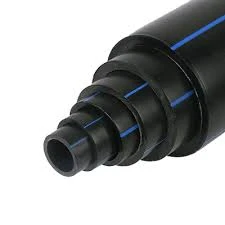Dec . 12, 2024 10:31 Back to list
gas pipe fittings
Understanding Gas Pipe Fittings Essential Components for Safe Gas Distribution
Gas pipe fittings play a crucial role in the safe and efficient distribution of gas in residential, commercial, and industrial settings. These fittings are essentially connectors that join different sections of gas piping, ensuring a tight and secure seal to prevent leaks and facilitate the flow of gas. In this article, we explore the various types of gas pipe fittings, their applications, installation considerations, and safety measures.
Types of Gas Pipe Fittings
Gas pipe fittings come in various shapes and sizes, each designed for specific applications within the gas distribution system. The most common types include
1. Elbows These fittings are used to change the direction of gas flow. Available in different angles, such as 90 and 45 degrees, elbows help navigate pipe routes around obstacles or through tight spaces.
2. Tees Shaped like the letter T, these fittings allow for the branching of a pipeline. Tees are used to connect three pieces of pipe, enabling the flow of gas in multiple directions without compromising the system's integrity.
3. Reducers These fittings are designed to connect pipes of different diameters, allowing for a smooth transition from a larger pipe to a smaller pipe or vice versa. This is important for managing pressure and flow rates within the system.
4. Caps and Plugs These fittings are used to seal the ends of pipes. Caps are typically used on the end of a pipe that is not meant to connect to another pipe, while plugs are used to close the opening on threaded pipe ends.
5. Couplings Couplings are used to connect two sections of pipe, ensuring a tight and secure joint. They can be threaded or slip-on, depending on the specific installation requirements.
Applications of Gas Pipe Fittings
Gas pipe fittings are found in various settings, including residential homes for natural gas or propane systems, commercial kitchens, and industrial applications such as power plants and manufacturing facilities. They are integral to the infrastructure that supplies heating, cooking, and various processes that rely on gas as a fuel source.
gas pipe fittings

In residential applications, for instance, gas pipe fittings connect the gas line to appliances such as ovens, water heaters, and furnaces. In commercial settings, they facilitate the safe operation of kitchen equipment like gas stoves, grills, and fryers. In industrial environments, these fittings are essential for ensuring a steady and secure supply of gas for machinery and heating systems.
Installation Considerations
Proper installation of gas pipe fittings is paramount for safety and efficiency. Here are some key considerations for installation
1. Materials The choice of materials for gas pipe fittings can significantly affect the system's safety and performance. Common materials include steel, copper, and plastic (for certain types of gas distribution). Always ensure that the fitting materials are compatible with the type of gas being transported.
2. Sealants and Threading When using threaded fittings, it's essential to apply the correct sealant to prevent leaks. Teflon tape or pipe joint compound should be used, ensuring that it is suitable for gas applications.
3. Torque Specifications Adhering to the manufacturer’s torque specifications during installation is vital to ensure fittings are tight enough to prevent leaks but not overtightened, which can cause damage.
4. Inspection After installation, a thorough inspection for leaks using a soapy water solution or a dedicated gas leak detector is crucial. Any signs of bubbles or a gas smell should be addressed immediately.
Safety Measures
Gas systems can pose serious safety risks if not properly installed and maintained. Following local codes and regulations, working with licensed professionals for installation, and conducting regular inspections can help mitigate these risks. Additionally, having appropriate gas detectors and emergency shut-off valves can further enhance safety in environments where gas is used.
In conclusion, gas pipe fittings are essential components that facilitate the safe distribution of gas across various applications. Understanding their types, applications, and proper installation practices ensures the effective and secure operation of any gas system. Whether for residential, commercial, or industrial use, prioritizing quality installation and maintenance of gas pipe fittings is critical for overall safety and efficiency.
-
High-Quality UPVC Water Supply Pipe for Durable Plumbing Solutions
NewsJul.23,2025
-
High-Quality PVC-M Water Supply Pipe for Reliable Plumbing Solutions
NewsJul.22,2025
-
High-Quality PVC Transparent Pipe with Clear Visibility & Durability
NewsJul.22,2025
-
Premium Wireless Headphones: Noise Cancelling & Long Battery | Order Now
NewsJul.21,2025
-
High-Quality PPR Pipes and Fittings Durable ERA PPR & PVC PPR Solutions
NewsJul.08,2025
-
Black HDPE Cutting Board - Durable, Non-Porous & Food Safe HDPE Plastic Cutting Board
NewsJul.08,2025

